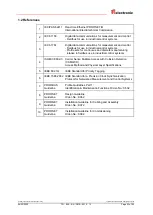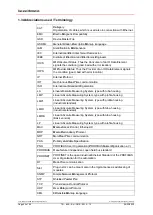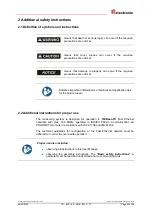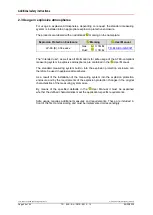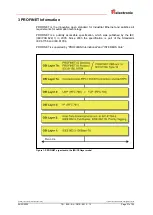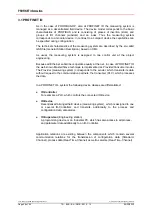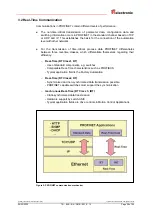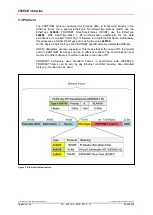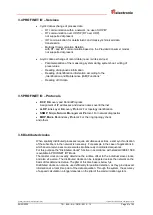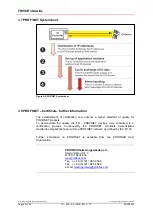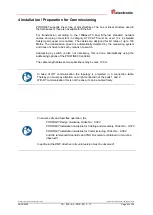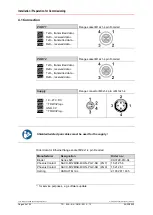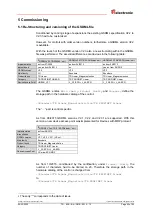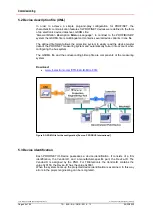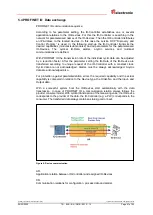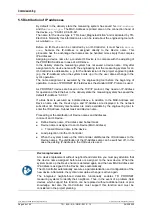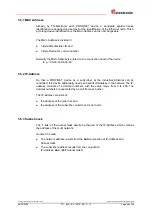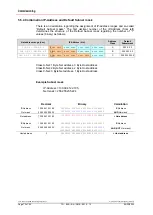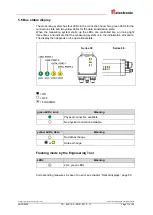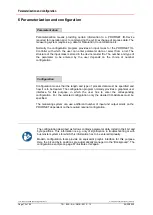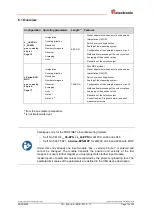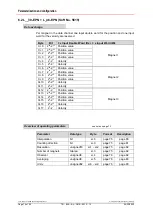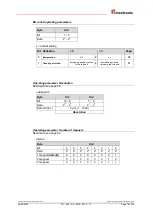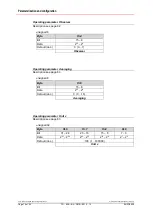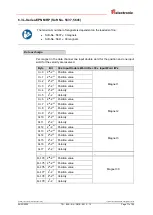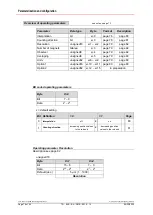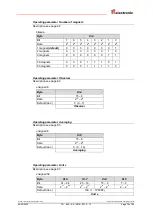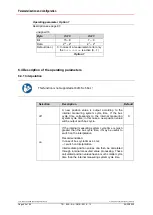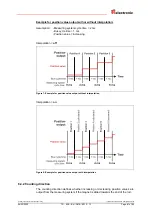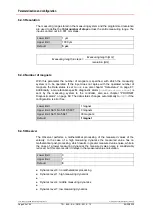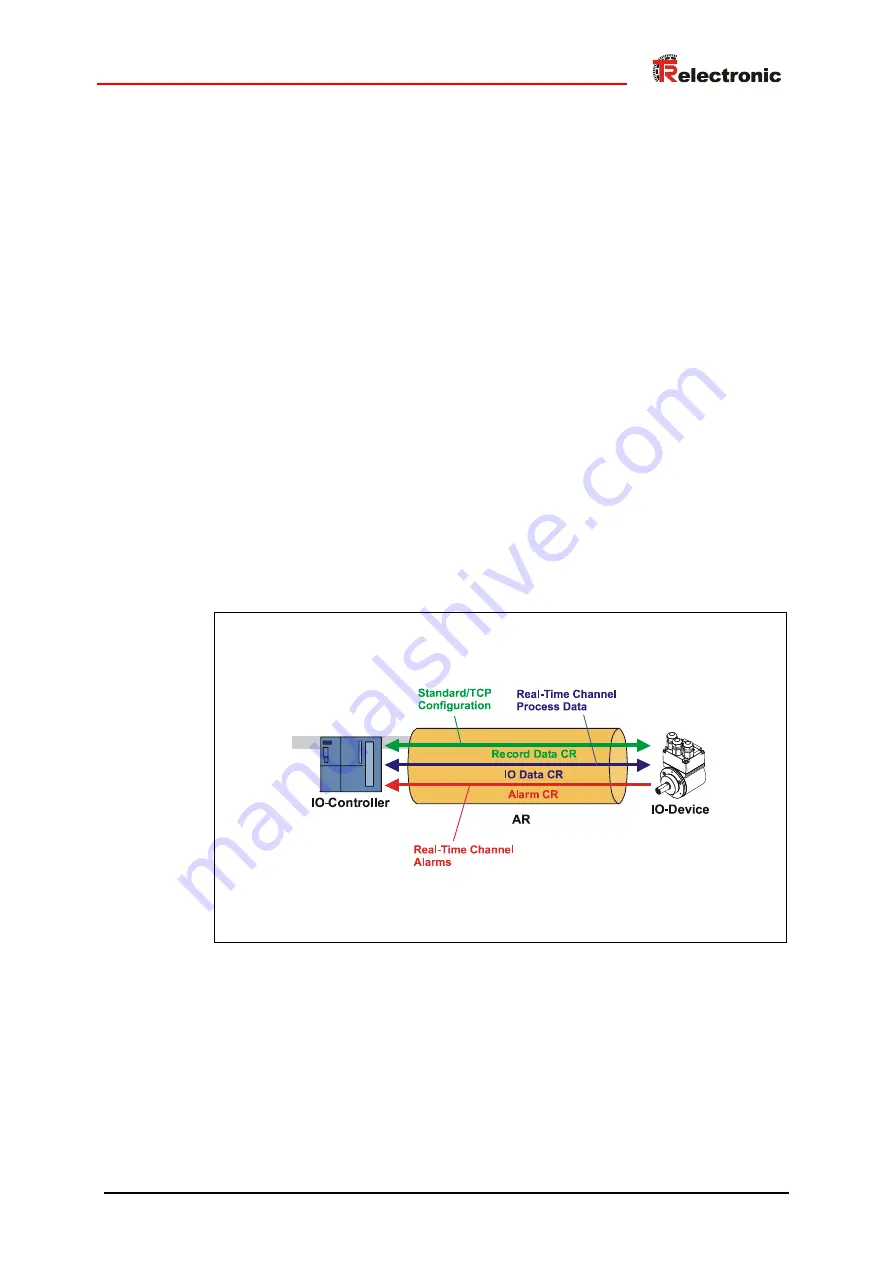
Printed in the Federal Republic of Germany
TR-Electronic GmbH 2009, All Rights Reserved
04/23/2020
TR - ELA - BA - DGB - 0015 - 13
Page 67 of 92
5.4 PROFINET IO Data exchange
PROFINET IO communication sequence:
According to his parameter setting, the IO-Controller establishes one or several
application relations to the IO-Devices. For this the IO-Controller is searching in the
network for parameterized names of the IO-Devices. Then the IO-Controller distributes
an IP-
Address to the located devices. In this case the service DCP “Discovery and
Control Program” is used. In the following start-up the IO-Controller transmits the
desired capabilities (modules/sub modules) and all parameters for the parameterized
IO-Devices. The cyclical IO-Data, alarms, acyclic services and multicast
communications are defined.
With PROFINET IO the transmission rate of the individual cyclic data can be adjusted
by a reduction factor. After the parameter setting the IO-Data of the IO-Device are
transferred according to unique request of the IO-Controller with a constant clock.
Cyclic data are not acknowledged. Alarms must be always acknowledged. Acyclic
data are acknowledged also.
For protection against parameterization errors the required capability and the actual
capability is compared in relation to the Device type, the Order-No. and the Input- and
Output data.
With
a successful system boot the IO-Devices start automatically with the data
transmission. In case of PROFINET IO a communication relation always follows the
provider consumer model. With cyclical transmission of the measuring value, the IO-Device
corresponds to the provider of the data, the IO-Controller (e.g. a PLC) corresponds to the
consumer. The transferred data always contains a status (good or bad).
Figure 6: Device communication
AR:
Application relation between IO-Controller and assigned IO-Devices
CR:
Communication relations for configuration, process data and alarms

